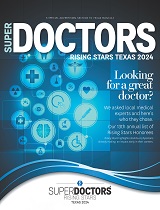Some Fats Are Healthier Than Others
The National Institutes of Health
From NIH News in Health (NIH)
December 2011
With the winter holidays upon us, you'll likely be surrounded by family, friends and plenty of good food. Many of these foods, though, can be high in fat. Learn which fats are naughty and which are nice to your health. Then you can make smarter food choices.
We need a certain amount of fat in our diets to stay healthy. Fats provide needed energy in the form of calories. Fats help our bodies absorb important vitamins-called fat-soluble vitamins-including vitamins A, D and E. Fats also make foods more flavorful and help us feel full. Fats are especially important for infants and toddlers, because dietary fat contributes to proper growth and development.
"Fats are really the most concentrated source of energy in the foods we eat, and our bodies need that energy," says NIH nutritionist Dr. Margaret McDowell. "Fats are truly an essential nutrient."
Problems arise, though, if we eat too much fat. Dietary fats have more than twice as many calories per gram as either proteins or carbohydrates like sugar and starch. Excess calories, of course, can pack on the pounds and raise your risk for diabetes, cancer and other conditions.
Eating the "wrong" kinds of fats can trigger additional health hazards. "Some fats are better for our bodies than others," McDowell says. "We should really aim to eat the right types of fats."
Foods can contain a mixture of different fats. Unsaturated fats are considered "good" fats. They're sometimes listed as "monounsaturated" and "polyunsaturated" fat on Nutrition Facts labels. These can promote health if eaten in the right amounts. They are generally liquid at room temperature, and are known as oils. You'll find healthful unsaturated fats in fish, nuts and most vegetable oils, including canola, corn, olive and safflower oils.
The so-called "bad" fats are saturated fats and trans fats. They tend to be solid at room temperature. Solid fats include butter, meat fats, stick margarine, shortening, and coconut and palm oils. They're often found in chocolates, baked goods, and deep-fried and processed foods.
"When we eat too many solid fats, we put our bodies at risk. These fats tend to raise total blood cholesterol, as well as the part of cholesterol known as low-density lipoprotein (LDL) cholesterol," says McDowell. "When those cholesterol levels are out of whack and too high, it's a risk factor for cardiovascular disease."
"When there's too much cholesterol in the blood, the excess can get trapped in artery walls and build up," adds Dr. Catherine Loria, an NIH expert on nutrition and heart health. "The buildup can develop into atherosclerosis, or hardening of the arteries, which can lead to coronary heart disease."
Experts say that the total fat intake for adults ages 19 and older should be 20% to 35% of the calories eaten each day. For children ages 4 to 18, it should be 25% to 35%.
Experts also say you should get less than 10% of your calories from saturated fatty acids. NIH-funded studies have shown that replacing the solid fats in your diet with healthful unsaturated fats can have a positive impact. "When you look at total fat intake, using unsaturated fats in place of some of the saturated fats actually lowers your total cholesterol levels, and mainly your LDL cholesterol levels, which is a good thing," says Loria.
Other NIH-funded research found that, when it comes to weight loss, the source of calories-whether from fat, protein or carbohydrate-isn't as important as the number of calories you consume. But when it comes to risk factors for heart disease, replacing some carbohydrates with protein or unsaturated fats can greatly improve blood cholesterol. In a specialized diet designed to lower blood pressure, using unsaturated fats in place of some carbohydrates boosted blood levels of "good" cholesterol (HDL cholesterol) and caused a more healthful drop in blood pressure.
"It's about becoming a label reader," says Joanne Gallivan, a registered dietitian who heads NIH's National Diabetes Education Program. To eat healthy, she says, "you need to read the Nutrition Facts label to learn the amount of fat and calories in the food, the amounts per serving, and what percent of calories come from fat." The nutrition label also shows the amounts of unhealthy saturated and trans fats.
Eating healthy fats and less total fat can be especially challenging over the holidays, however. "You want to enjoy the foods and the celebration. You shouldn't think of the holidays as a time to deprive yourself," says McDowell.
One way to cut fat at holiday gatherings is to simply reduce your portion sizes. "Choose more lean meats, like poultry without the skin. Eat more fruits, vegetables and whole-grain foods," says Gallivan.
When preparing recipes, try to use lower-fat ingredients. "Low-fat and fat-free yogurt and milk still contain the important proteins and minerals found in the full-fat versions, but you're getting less saturated fat and cholesterol," McDowell says. "In some recipes, you can use applesauce or egg whites, instead of oil. In general, bake, broil or grill instead of frying."
Learn to read between the lines on Nutrition Facts labels. "If a food is labeled ‘low-fat,' that doesn't necessarily mean it's low in calories," says Gallivan. Nonfat cookies, crackers and other products may contain added sugar and salt to boost their flavor. Added sugar can add calories, and too much salt can raise blood pressure.
"If you indulge a bit over the holidays, just be sure that the next day you go back to following a healthy meal plan and being active," says Gallivan. And remember, when it comes to saturated or trans fats in your diet, you'll help your health if you choose wisely and trim the fat.

